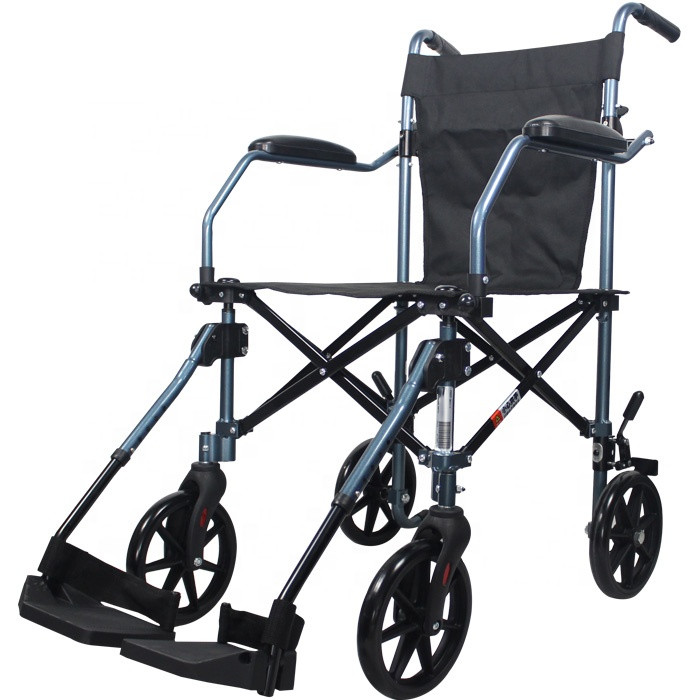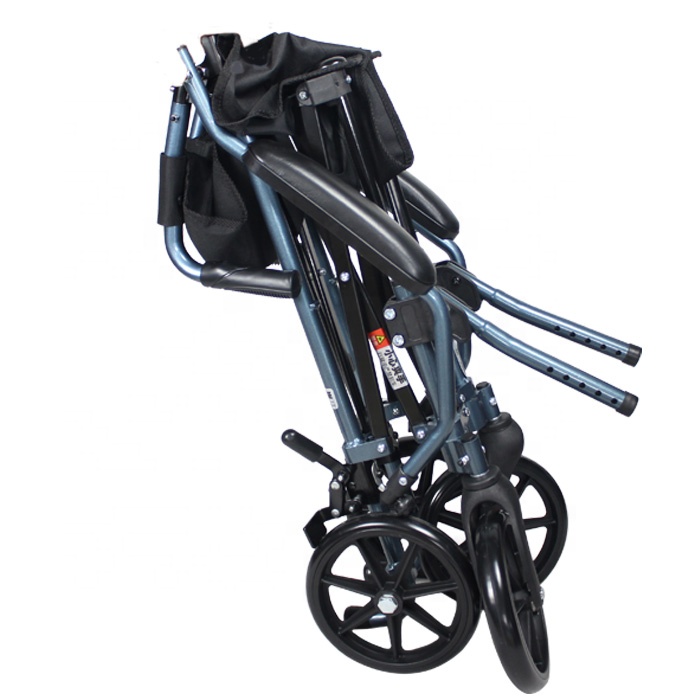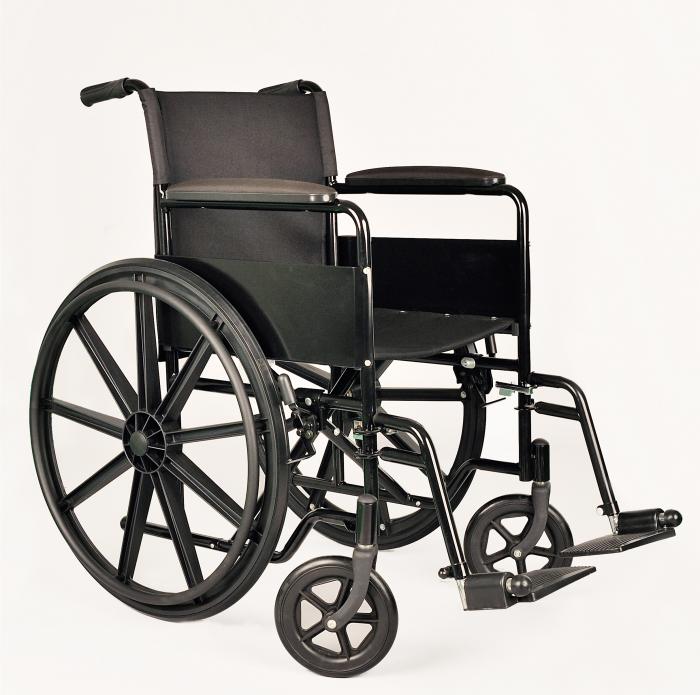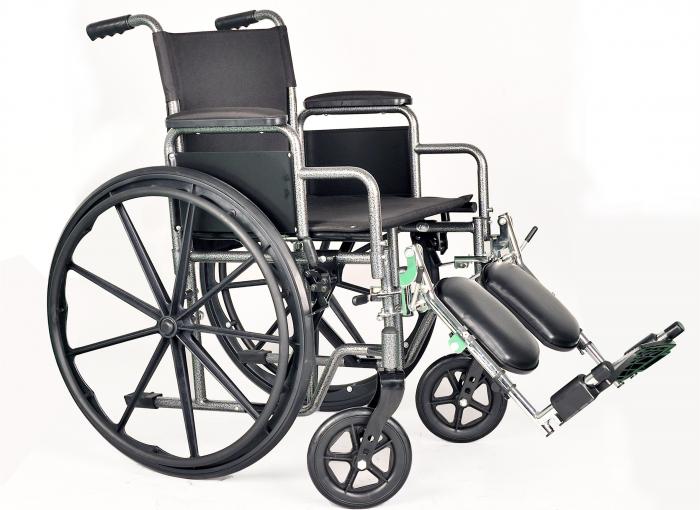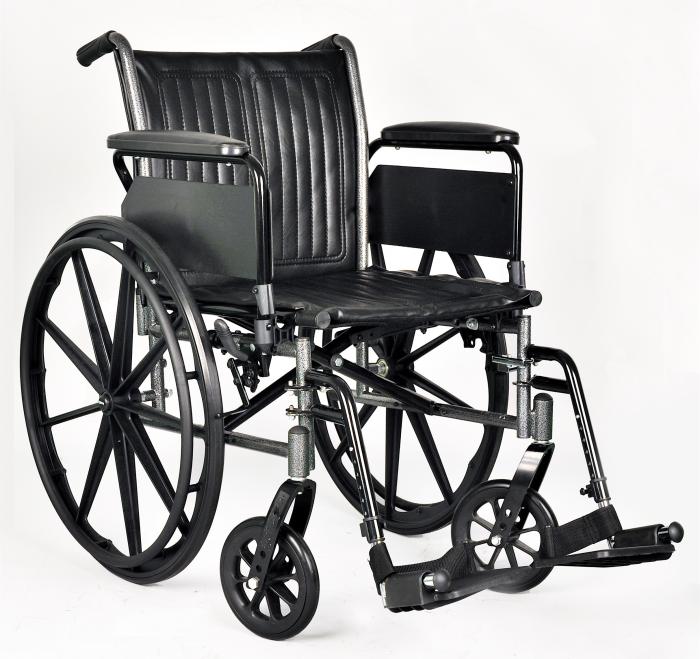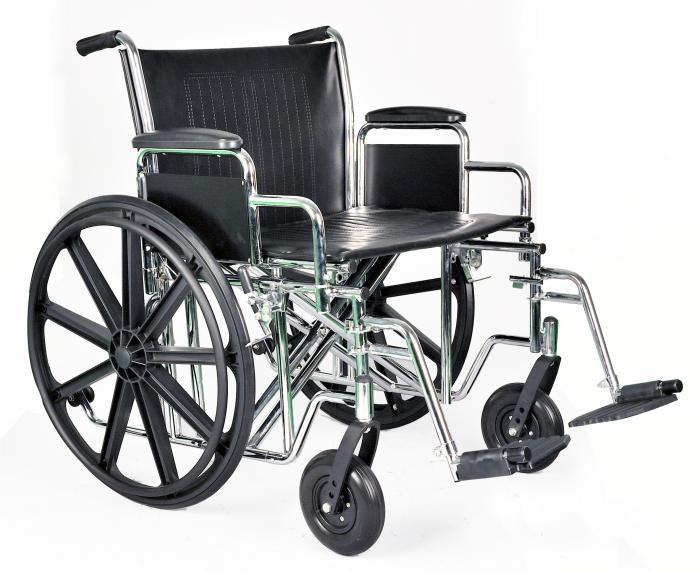| Name: | Transport Chair With FREE Carry Bag |
|---|---|
| Model No.: | BES-WL026 |
| Product Name: | Transport Chair |
| Brand: | BESCO |
| MOQ: | 50 units |
| Keywords: | Transport Chairs,Lightweight Chairs,Folding Chairs,Transport Chairs For Sale |
| Sample: | Available |
| Lead time: | 25 days |
| Payment Term: | T/T in advance |
| Country of Original: | China |
| Weight Capacity: | 110 kgs |
| Port of Loading: | Qingdao |
| Factory Address: | Shanghai |
| Office: | Zhengzhou,China |
Products Description
Features
|
|
|---|---|
| Specifications |
A transport chair, also known as a companion wheelchair, is a lightweight, foldable chair with four small wheels designed for a caregiver to push a person short distances. Unlike standard wheelchairs, the user cannot self-propel a transport chair because it lacks the large rear wheels and has small wheels on all four corners. They are ideal for short-term use, such as trips to the doctor, short outings, or short-term recovery from illness or surgery.
Key Features
Small Wheels:
Transport chairs have small wheels on the front and back, making them lightweight and easy to maneuver.
Lightweight & Foldable:
They are significantly lighter than standard wheelchairs and are designed to fold up, making them easy to store or carry in a car.
Caregiver Propelled:
The user cannot use their feet to push themselves; a caregiver must provide the propulsion.
Narrower Frame:
Transport chairs are typically narrower than standard wheelchairs, allowing them to navigate tight spaces and narrow doorways more easily.
Limited Support:
The seat is often made of a flexible fabric that does not offer a lot of support and is not recommended for full-time use.
When to Use a Transport Chair
Medical Appointments:
Ideal for getting to and from appointments, especially when using a different mobility device at home.
Short-Term Use:
Best for situations requiring mobility for a short duration, such as after surgery, during an illness, or for a one-day outing.
Occasional Mobility:
Suitable for individuals who can walk but need assistance for limited ambulation.
What It Isn't
Full-Time Use:
Not suitable for individuals who require a wheelchair for all their mobility needs, as it offers less support than a standard manual wheelchair.
Self-Propelled Chair:
Users cannot use the large rear wheels to propel themselves, making it distinct from a standard wheelchair.
To use a transport chair, first, unfold the chair by pulling the armrests apart until it is fully open. Then, position and attach the footrests by aligning the pins with the hangers and swinging them inward to lock them. Engage the brakes by pushing down on the levers until they firmly press the wheels. To have the user sit, position the footrests up and slowly lower the user into the chair. To move, a caregiver must push the chair from the rear.
Opening the Chair
1. Pull the Armrests Apart:
Grasp the armrests and pull them apart to unfold the chair until the seat is fully extended.
2. Extend the Backrest:
Lift the handgrips upwards until the backrest is fully extended and you hear a click, indicating it has locked into place.
Attaching and Adjusting Footrests
1. Attach the Footrests:
Align the pins on the footrests with the corresponding holes or hangers on the frame.
2. Lock the Footrests:
Push the footrests inward until the locking lever or mechanism clicks into place.
3. Adjust Height (if applicable):
If the footrests have height adjustment buttons, press and slide to extend or shorten them to ensure a comfortable position for the occupant. The goal is to support the user's feet with the knees at a 90-degree angle.
Braking and Seating
1. Engage Brakes:
Push down on the brake handles located on the back of the chair until you feel the brakes lock the wheels, preventing them from rolling.
2. Position Footrests:
Flip the footrests into an upright position to allow the user to stand between them.
3. Lower the User:
Assist the user by slowly lowering them into the chair, ensuring they are comfortable.
4. Lock the Brakes:
Ensure the brakes are fully engaged before the user sits in the chair to prevent any accidental movement.
Operation
Push the Chair: A caregiver pushes the chair from the rear using the push handles.
Adjust Footrests: The footrests can be swung to the side to allow the user to stand or move the chair more easily.
Fold for Transport: To fold the chair, push down on the designated tabs, which releases the backrest. Then, hold the armrests and pull them together until the chair folds completely.
